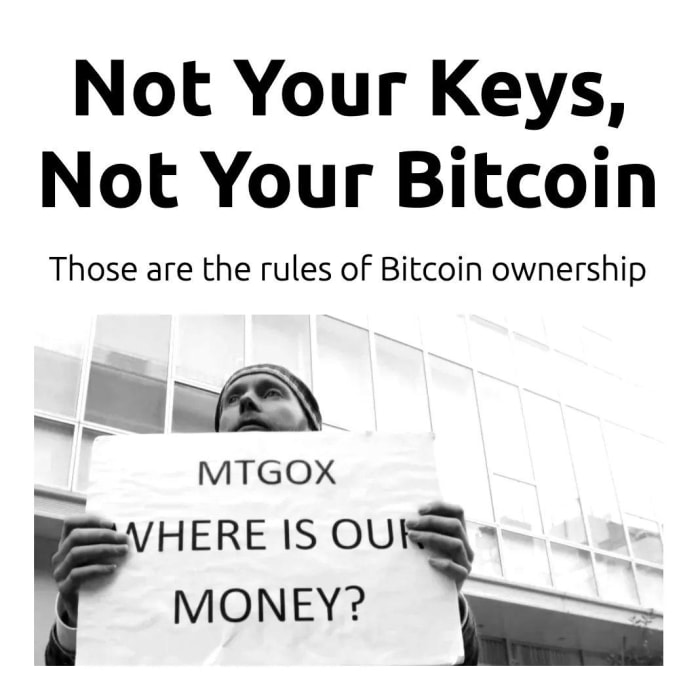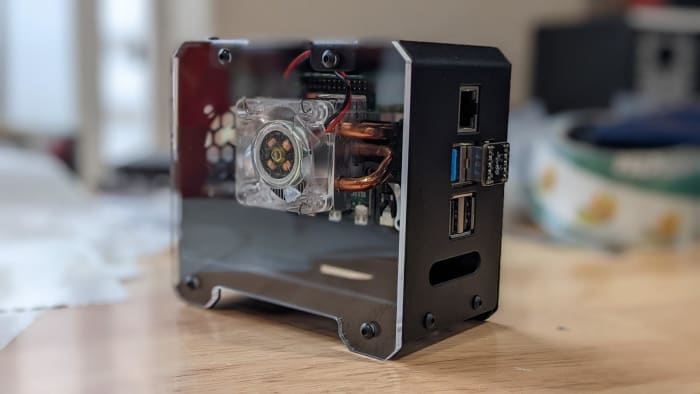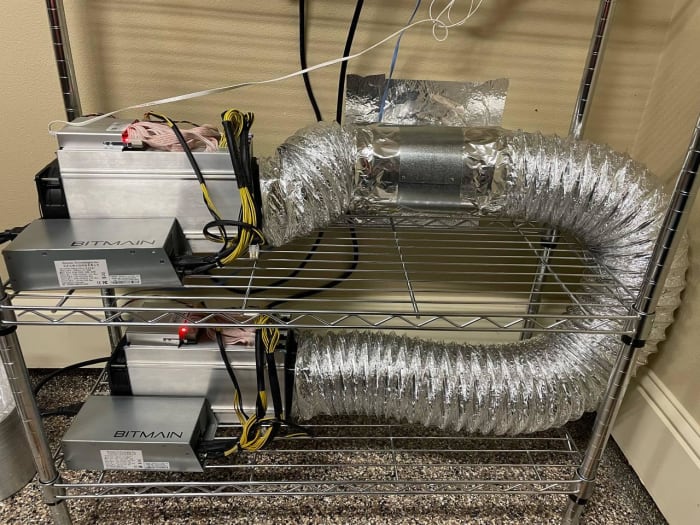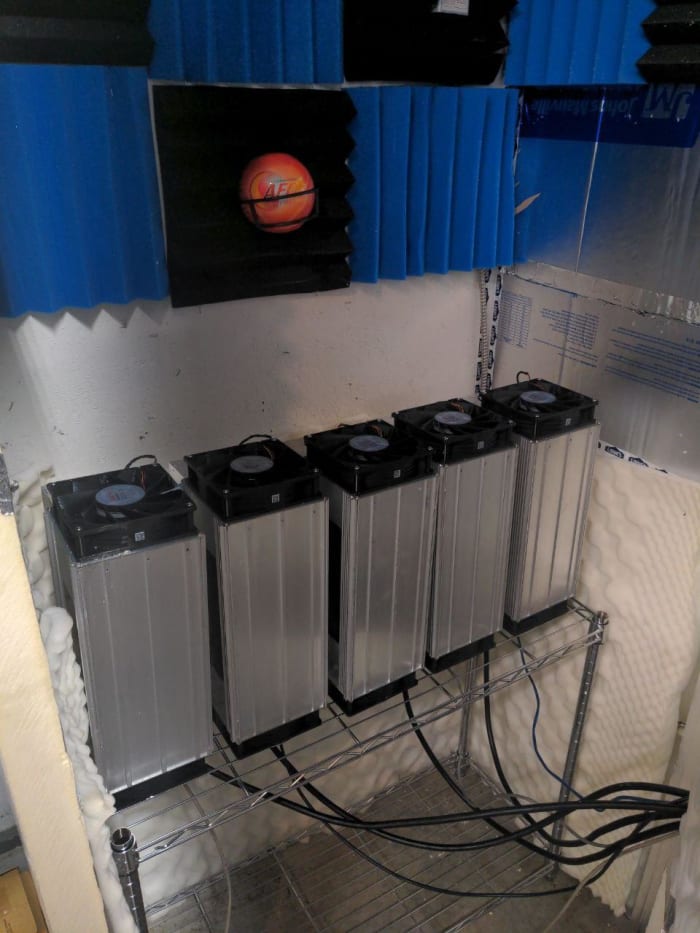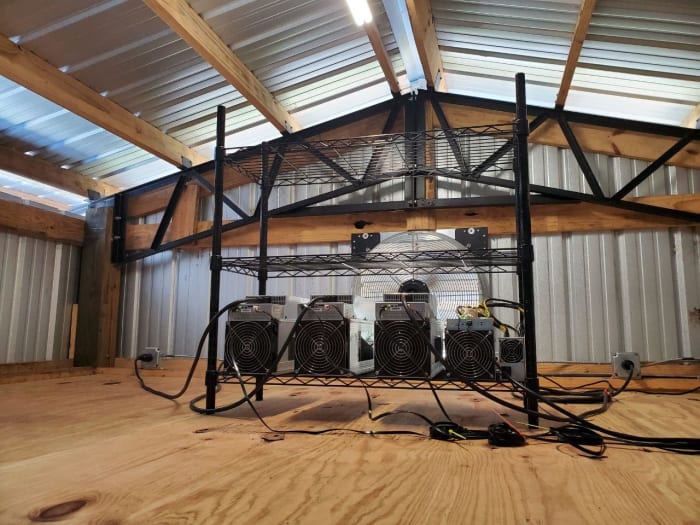Congratulations and welcome to the Bitcoin network! This is the beginning of an exciting adventure full of countless resources, lots of helpful mentors and online friends who can become in-person friends if you go to local meetups or conferences. Not to mention ample hope for the future, as the magnitude of Bitcoin’s effect on the world is realized.
The Bitcoin journey can have a noticeable impact on every aspect of life and the rabbit hole is as wide as it is deep. There are an overwhelming number of topics to learn about in myriad disciplines: economics, technology, philosophy, finance, personal responsibility, computer science, energy production, electrical engineering — the list goes on. Even narrowing the list down to matters specifically related to using Bitcoin can be overwhelming.
This piece is meant to support those who have taken the orange pill, but don’t know what to do next.
Using Bitcoin responsibly means being one’s own bank. While there are many topics to traverse about Bitcoin, the first necessary step is taking self custody over any bitcoin bought on an exchange. If you’re reading this, you’ve hopefully set up an account with Swan Bitcoin, Cash App, Strike, River Financial or even Coinbase. Maybe you’ve heard the phrase, “Not your keys, not your bitcoin” and are ready to take the next step with this Bitcoin thing, but don’t know what to do next. Well, you’re in the right place.
There are three main ways to interact with the Bitcoin network:
Holding the private key by withdrawing bitcoin from an exchangeRunning a Bitcoin full nodeMining bitcoin at home
Getting bitcoin off of the exchange is the absolute bare minimum requirement, while running a full node and mining bitcoin at home are more dedicated ways to participate. Running a node is extremely important to preserving the rules of Bitcoin, such as the hard limit of 21 million bitcoin to ever exist, while mining is a way to strengthen and decentralize the network while earning bitcoin pseudonymous in the process.
Doing all three paves the way for Bitcoin sovereignty and being your own bank. Although they are reliant on one another on a large scale for the security of the Bitcoin network, each individual can choose if they want to do all of the following or any one of them independently; the choice is up to the user.
For readers who want more details, the explanations for each topic are in the paragraphs. For readers who are more task-oriented, there is a bulleted list at the end of each section.
Get Bitcoin Off An Exchange
First and foremost, owning bitcoin requires holding private keys. Some key terms:
Seed phrase: 12 or 24 words that represent a long string of numbers and letters which can generate private keys and public keys. They should never be shared with anyone, ever.Private key: Can be thought of as a “master key.” Anyone who has a private key is able to spend any and all funds associated with it.Public key: Derived from a private key. Can be thought of as a “lock.” Anyone who has a public key can create addresses where funds can be sent, but cannot spend them without the private key.Address: Derived from a public key, an address is used to receive bitcoin. It comes in the form of a string of numbers and letters, starting with a 1, 3, or, most commonly, bc1. It can also be expressed as a QR code, but should be checked against that string of numbers and letters to make sure they’re the same (more on that later).
Bitcoin is an asset anyone can truly own and have complete control over (as long as they are the only one with the private key). This is because it does not rely on trusted third parties, banks, authority or governments. If bitcoin is on an exchange, it’s just an IOU. To clarify, if bitcoin is in Cash App, Coinbase, Swan, River, Kraken, Binance, Kucoin, Bittrex or any other place where it was bought from a third-party custodian, it’s most likely a custodial exchange and not in one’s own wallet.
There are a ton of YouTube videos on how to get it off the exchange and into self-custody. There’s a learning curve, but anyone can do it with a little effort! I’ll explain it in writing for people who learn in this format.
The first step is to download wallet software. There is software that works without the use of a hardware device and may be a good place to start. The wallet that I like to use is Wasabi Wallet because of the CoinJoin service it offers as well as the capability to connect to my Bitcoin node and hardware devices. It recommends the use of a passphrase, which can absolutely never be forgotten. Ever. After downloading the software, it’s time to generate a new wallet. Name the wallet and add an (optional) passphrase. Leave the “password” box blank to opt out.
Next, there will be a page with 12 words (some wallets have 24). Get a notecard or piece of paper and a pen to write these words down. Never save them on a computer. Write them in order on a notecard or piece of paper and put it in a very safe location that will not be forgotten by you or found by anyone else. These 12 (or 24) words are the “seed phrase” which can be used to recreate the private/public keys to access funds.
If the computer is destroyed, but the seed phrase is safe, the bitcoin is safe. (Bitcoin is stored on the blockchain, not on a device.)
Once the words are written down, check the box and the wallet will be created. We’re ready to withdraw Bitcoin from the exchange! Click the “receive” tab and make a label. I usually make the label the exchange where I’m withdrawing from or the person who knows I’m using this address. Click “generate receive address” and the wallet software will create a bitcoin address using the public key (think: lock). This will consist of a string of letters and numbers, usually starting with bc1q. Click here to learn more about address types.
Click the address for it to be copied. Then paste it into the exchange’s withdrawal menu. There is also a drop down tab to display a QR code for scanning using a phone camera (for exchanges with phone apps such as Cash App). Double and triple check that the address pasted on the exchange’s website matches the one from Wasabi before clicking send.
Done! Your keys, your bitcoin. Some exchanges have an extra step requiring confirmation by email or another method. This is an added layer of security once the bitcoin transfers off the exchange. No one besides the person who has the private key can access it.
Recap:
Download Wasabi WalletGenerate walletWrite down seed phraseStore seed phrase in the safest placeClick “receive” tabLabel with exchange nameGenerate addressLog into exchange and go to “withdraw”Copy address from Wasabi Wallet into the exchange’s withdrawal pageDouble check that the addresses matchWithdrawWait (blocks take about 10 minutes to confirm and the exchanges usually batch transactions, so it may take a while)
For a solution that is more secure than a software wallet, a hardware device offers the ability to store private keys offline. Trezor is a decent option. I prefer Coldcard, but there’s a bit more of a learning curve for using it. There’s also Passport, BitBox, Ledger and more.
Still reluctant after reading? There are companies such as Unchained Capital, Bitcoin Support, and Casa that will walk people through the process.
Additional Resources:
Important Side Note
Storing the seed phrase is more essential than securing the computer with the software wallet or keeping the hardware device safe. The seed phrase is the root of both the private and public keys, so anyone with the seed phrase can access all funds. There is no one to go to for help if this happens. If the seed phrase is lost and the software/hardware wallet fails, the funds are inaccessible. For good. If hardware is destroyed, but the seed phrase is safe, the bitcoin is accessible. There are many solutions for securing a seed phrase securely. Marking them in steel is a common practice for long term storage. Check out Lopp’s guide for ratings based on various tests.
Run A Bitcoin Node
The next step to developing the technological self sovereignty for being one’s own bank is to run a Bitcoin node. Nodes are important for many reasons. Running a node further decentralizes the Bitcoin network. Node operators can verify that no one is trying to manipulate the rules of bitcoin, i.e., adding more than 21 million bitcoin, double-spending funds, etc. Bitcoin is an entirely voluntary system. When someone runs a node, they are choosing what rules they want to follow. If others try to change the consensus rules, node operators can make their own choice of whether to opt into a change or not.
This is one of the beautiful things about Bitcoin. My choice about which Bitcoin protocol rules my node follows is equivalent to those of any other person’s node, no matter how much bitcoin they have. It’s complete freedom of choice. (For more on the power of node operators, read “The Blocksize War.”)
A government attack on Bitcoin would require nodes and miners to be shut down en masse. Even if the “Build Back Better” cult is aiming to undermine Bitcoin (as detailed in my last article), we can thwart the very unlikely possibility of an insurgency if we run nodes and provide easily-accessible education for others to do so as well. Bitcoin nodes being operated by genuine plebs would be necessary to maintain Bitcoin’s continuity. If you are not using a node at home, you are relying on someone else’s. If they want to opt into a change of rules that you don’t, tough luck…
“Not your node, not your rules.”
Setting up a node is a little more complex than withdrawing bitcoin from an exchange because it requires special hardware or a lot of space on a computer (about 435 GB). The special hardware needed includes:
Raspberry Pi 4Power Supply1 TB SSDSSD Enclosure16 GB+ microSD CardmicroSD Card ReaderRaspberry Pi Case (even a custom case!)Ethernet cable
Once the hardware is acquired and assembled as per the directions, choose an instance of node software to run. Some of the more popular ones are myNode, Umbrel and Raspiblitz. Download the image from the respective website and download Balena Etcher. Plug the microSD card into the computer and open Balena Etcher. Then:
Select Image (downloaded image)Select Target (SD card reader device with SD card)Flash Image
Remove the microSD from the computer and insert it into the Raspberry Pi. Make sure the SSD is attached to the Raspberry Pi and the Ethernet cable is connected to the wireless router. Attach the power supply and turn it on. The software will automatically install.
Done! Your node, your rules. The way to connect to the node is either through typing the IP address in a browser such as Firefox or Chrome or by typing http://umbrel.local or http://mynode.local, depending on the instance being used.
Recap:
Acquire hardwareAssemble hardwareChoose an instance and download (myNode or Umbrel are good for beginners)Download Balena EtcherConnect microSD to computerOpen Balena EtcherFlash downloaded image to microSDInsert microSD into Raspberry PiConnect SSD to Raspberry PiConnect Ethernet cable from Raspberry Pi to wireless routerConnect power cable to Raspberry Pi, plug it in and turn it onInteract with node by typing its IP address, or http://umbrel.local or http://mynode.local into a browser. (IP address can be found using AngryIP).The default password for myNode is “bolt” and I think the default password for Umbrel is “moneyprintergobrrr”Change the default password!
I found building a node to be a fun project, but there are some plug-and-play models if a person prefers to have someone else do it. Don’t trust, verify.
Additional Resources:
Mine Bitcoin At Home
Home mining is making a resurgence for the first time since early in Bitcoin’s history. Miners get paid in bitcoin to expend energy and write transactions to the blockchain. I recently heard an analogy that suggested miners are the writers of the blockchain and nodes are the readers. Nodes verify or “read” that the miners are writing transactions that follow the rules.
Bitcoin exchanges are required to collect personally-identifiable information due to know your customer (KYC) and anti-money laundering (AML) laws. Even after transferring bitcoin off of an exchange, personal data such as social security numbers, addresses and phone numbers are sitting in the exchanges’ servers, which becomes a honeypot for hackers and governments. If a government subpoenas the exchange, the exact amount of bitcoin owned by each customer is now known by the government.
Mining bitcoin is a different story. Running a miner is a way to acquire bitcoin without having to go through the same process of giving all of that personally-identifiable data to an exchange that tracks every amount of bitcoin purchased and keeps sensitive information on their servers.
There has been a major resumption of home bitcoin mining recently, probably for this very reason. Home miners can be more anonymous with their acquisition of bitcoin because once a miner is up and running, its hash power can be pointed toward any mining pool and the owner receives bitcoin without any KYC process other than an email address.
Buying and setting up a bitcoin miner seems daunting, but the biggest barrier to entry is the cost of the machine. Newer-generation miners currently cost between $8,000 and $13,000. There are some very reputable vendors such as Kaboomracks for purchasing a miner. Older-generation miners are much less efficient, but can still earn KYC-free bitcoin. By installing firmware such as Braiins, even older generation miners can still be somewhat profitable. An older-generation machine, such as an Antminer S9, is almost a direct exchange between the cost of energy and the earned bitcoin, but the bitcoin is earned pseudonymously.
Besides the cost, another hurdle is the sound; bitcoin miners are deafening. We’re called “cyber hornets” for a reason! Upstream Data is entering the consumer market with its Black Box, which almost completely eradicates the noise issue from mining. I’ve found some extremely helpful groups on Telegram that support new miners who are trying to get set up.
First, consult an electrician to make sure you can install a 240-volt outlet with a dedicated, dual-pole, 20-amp breaker wired with 12 AWG. The miner will need a lot of air flow, so a garage or utility room can be a good place for installation as long as it can be ducted into an air handler or be allowed to run noisily without bothering anyone.
The machine also needs a way to connect to the network with an Ethernet cable. Often the wireless router isn’t near the garage, so a WiFi extender is a cheap option.
Image credit: d0wNt0wN
Then we need to acquire a machine. Kaboomracks is the way to go. Note: the machines do not typically come with power cables. The type of power cable depends on the machine and the type of outlet chosen to install. I went with this kind of outlet. Antminer S19s need two cables, such as these (an S9 only needs one of them). Whatsminers need one cable, such as this.
While waiting for the machine to arrive, choose a mining pool to join. There are a few types of payouts. F2Pool pays a regular amount (determined by user hash power) whether the pool finds a Bitcoin block or not. Slush Pool only pays when they find a Bitcoin block. My preference is Slush Pool. Signing up for a pool only requires an email address. For privacy purposes, it could be beneficial to create an email for this express purpose. We’ll come back to the pool when it’s time to set up the machine.
After the electrician sets up the outlet and the machine and cables arrive, it’s time to plug it in! Make sure an Ethernet cable is plugged into the router or the extender as well as the machine, then connect the power cable(s) to the 240 volt outlet. It’s loud, right?!
Use AngryIP to scan the wireless network and type in the various IP addresses into a browser until prompted with a login popup. The default username/password for Antminers is “root” (both fields) and the default for Whatsminers is “admin” (both fields).
Now that we’re into the dashboard, we’ll need to connect to our pool. On another tab, log into the pool joined (Slush Pool or F2Pool are only two options out of many). For Slush, click “Qorkers,” and the purple “Connect Workers” button. A prompt will show with a link, user ID and password. Go to the tab with the dashboard of the miner and click settings. This is where that link,” Miner Name” (user ID), and password can be added. There are spaces for three pools in case one goes offline for any reason. Slush is my main option, with F2Pool as a backup. Save the settings and go back to the other tab to check that the hash power is registering with the pool. It may take a few minutes to fully connect.
That’s it! Now we’re mining the corn! At some point soon, we’ll want to connect a wallet address to the pool in order to receive payouts. This wallet should be completely separate from any funds that get sent from an exchange. If sending funds from an exchange to Wasabi, create a completely new wallet to send funds from the mining pool. This will keep any bitcoin that may have been connected to your identity with KYC/AML laws separate from bitcoin that is not connected to your real-world identity in any way thanks to mining.
Recap:
Acquire a machine from KaboomracksHire an electrician to install a 240-volt outlet on a dual-pole, 20-amp breaker with 12 AWGOrder power cable(s)Order an Ethernet cable and optional WiFi extenderPlug in the Ethernet cable to the miner and wireless router or WiFi extender Plug in the power cable(s)Access the machine through a browser using the IP address and default username and password (“root” for Antminers, “admin” for Whatsminers)Point hash power toward a mining pool by copy/pasting the link, userID and password from the pool into the settings of the minerLink a Bitcoin address for the rewards to be sent
As someone who has set up both a node and a miner, I actually found it easier to get the miner set up than I did building, running and actually using a node. Check out the pictures below for ideas for how some home mining wizards are running Bitcoin.
Additional Resources:
Conclusion
Engaging with the Bitcoin network may seem overwhelming at first. There are many levels of participation. My recommendation is to get bitcoin off the exchange and see what feels right for the next step. Maybe that’s jumping into mining next because it involves more hands-on building. Maybe it’s assembling a node and diving into the technical aspects. Maybe it’s just holding keys for a bit, while studying other Bitcoin-adjacent topics, such as Austrian economics, game theory, philosophy, finance and history.
Each user has complete freedom to be involved with Bitcoin in whatever way works for them. That’s the beauty of Bitcoin; it’s complete freedom to opt-in however one wants.
This is a guest post by Craig Deutsch. Opinions expressed are entirely their own and do not necessarily reflect those of BTC Inc or Bitcoin Magazine.
Source: https://bitcoinmagazine.com/culture/what-to-do-with-bitcoin


